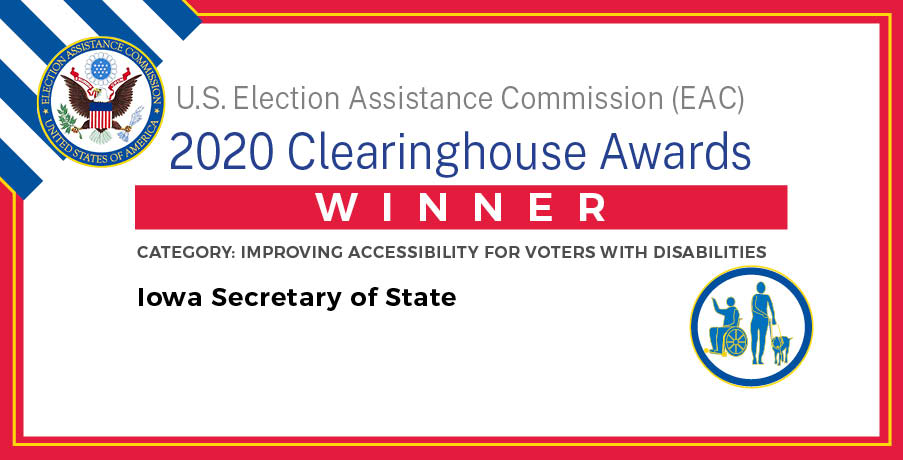Nebraska's Successful Voter ID Campaign: A National Clearinghouse Award Winner

Table of Contents
The Genesis of Nebraska's Voter ID Program
Nebraska's journey to a successful voter ID program involved addressing existing challenges and strategically designing and implementing a robust system.
Addressing Existing Challenges
Prior to the enhanced voter ID program, Nebraska, like many states, faced concerns about potential voter fraud and vulnerabilities within its election system. While instances of widespread fraud were not prevalent, the potential for irregularities and the public perception of election integrity were key drivers for improvement.
- Examples of past issues: While not widespread, isolated cases of voter registration irregularities and potential duplicate registrations were identified.
- Public perception of election integrity: Public trust in the election process is paramount. Even minor instances of perceived irregularities can erode this trust.
- Political motivations: The impetus for improving voter ID measures often arises from a combination of concerns about election security and political considerations.
Design and Implementation
Nebraska's voter ID program was carefully designed to balance security with accessibility. The program specified acceptable forms of identification, yet included provisions for voters lacking standard identification.
- Types of acceptable IDs: The program accepted a range of IDs, including driver's licenses, state-issued identification cards, and tribal identification cards.
- Process for obtaining alternative IDs: For voters without these standard IDs, the state offered a streamlined process to obtain free alternative identification. This included providing assistance with applications and documentation.
- Resources provided to voters: The state launched a comprehensive public awareness campaign to inform voters about the new requirements and to provide resources and assistance.
Key Elements of the Successful Campaign
The success of Nebraska's voter ID campaign stemmed from several key elements: effective public awareness, commitment to accessibility and inclusivity, and strong collaborative partnerships.
Effective Public Awareness and Education
Nebraska's campaign excelled in educating voters about the new requirements, proactively addressing concerns and combating misinformation.
- Public service announcements: Targeted PSAs were aired across various media platforms, using different languages and formats to reach diverse audiences.
- Media outreach: Proactive engagement with media outlets ensured widespread dissemination of information and addressed potential concerns effectively.
- Community engagement programs: Outreach events were held in communities across the state, providing direct assistance and answering questions from voters.
- Multilingual resources: Information materials were translated into multiple languages to ensure accessibility for all eligible voters, regardless of their primary language.
Accessibility and Inclusivity
Nebraska's commitment to accessibility ensured that all eligible voters could participate, regardless of their circumstances.
- Assistance programs: The state provided assistance programs to help voters obtain necessary identification documents.
- Accessible voting locations: Voting locations were chosen to ensure accessibility for voters with disabilities.
- Translation services: Translation services were readily available at polling places to assist voters with language barriers.
- Alternative ID options: The availability of alternative ID options, coupled with assistance programs, minimized barriers for voters with limited resources.
Collaboration and Partnerships
The success of the campaign hinged on collaboration between various stakeholders.
- Partnerships established: The state collaborated with county election officials, non-profit organizations, community groups, and disability advocacy groups.
- Shared responsibilities: Responsibilities were shared among partners, ensuring efficient resource allocation and campaign execution.
- Mutual support: Partners provided mutual support, leveraging each other's expertise and resources.
- Resource sharing: The sharing of resources, information, and best practices fostered a cohesive and effective campaign.
The National Clearinghouse Award and its Significance
The National Clearinghouse award underscores the success and significance of Nebraska's voter ID program.
Award Criteria
The National Clearinghouse uses rigorous criteria to evaluate voter ID programs. Nebraska's success was due to meeting several key criteria:
- Specific criteria met: The program demonstrated a clear improvement in election integrity while maintaining voter access.
- Evaluation process: A thorough review process assessed program design, implementation, and impact.
- Areas of excellence: Nebraska excelled in public outreach, accessibility, and collaborative partnerships.
National Impact and Implications
Nebraska's achievement provides a valuable model for other states seeking to improve their voter ID programs.
- Potential for replication: The program's success demonstrates the possibility of creating effective and inclusive voter ID programs elsewhere.
- Lessons learned: Nebraska's experience highlights the importance of public engagement, accessibility, and collaboration.
- Best practices for other states: The program offers valuable best practices for states working to improve election integrity and voter access.
Conclusion
Nebraska's award-winning voter ID campaign demonstrates that a well-designed and implemented program can enhance election integrity while safeguarding the right to vote. The success hinges on a multi-pronged approach encompassing effective public awareness, unwavering commitment to accessibility and inclusivity, and robust collaboration among diverse stakeholders. Learn more about Nebraska’s best practices and consider how similar strategies can be employed in your state to improve your own voter ID program. Explore resources on effective voter ID campaigns and contribute to a more secure and accessible electoral process for all citizens. Improving your state's voter ID program is crucial for strengthening election integrity and ensuring every eligible citizen can exercise their right to vote.

Featured Posts
-
 La Seine Musicale Guide Des Concerts Spectacles Et Films 2025 2026
May 03, 2025
La Seine Musicale Guide Des Concerts Spectacles Et Films 2025 2026
May 03, 2025 -
 A Qui Est Dedie Les Tuche 5
May 03, 2025
A Qui Est Dedie Les Tuche 5
May 03, 2025 -
 Sc Election Integrity Survey Shows High Public Trust 93
May 03, 2025
Sc Election Integrity Survey Shows High Public Trust 93
May 03, 2025 -
 Internal Tory Conflict The Reform Uk Challenge
May 03, 2025
Internal Tory Conflict The Reform Uk Challenge
May 03, 2025 -
 Belgium Vs England On Tv Kick Off Time Channel And How To Watch The Lionesses
May 03, 2025
Belgium Vs England On Tv Kick Off Time Channel And How To Watch The Lionesses
May 03, 2025
